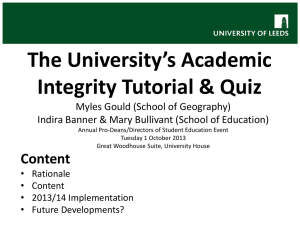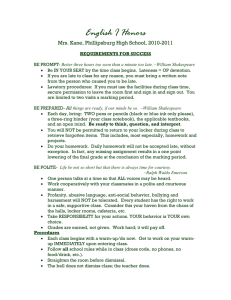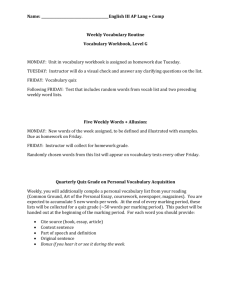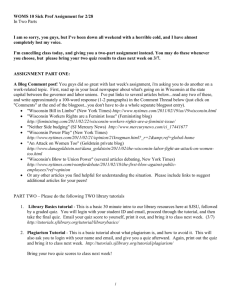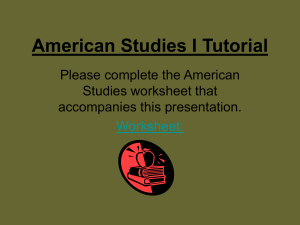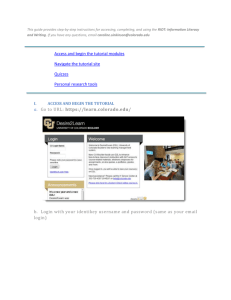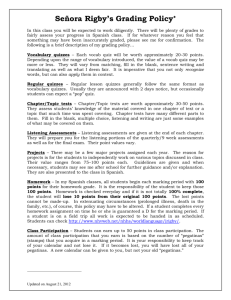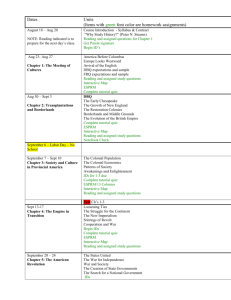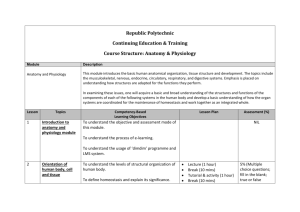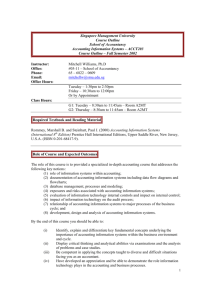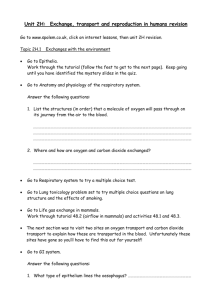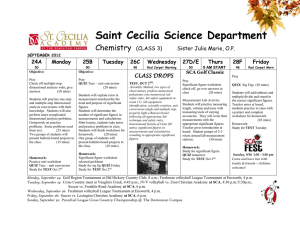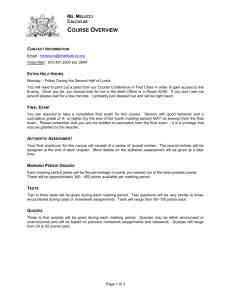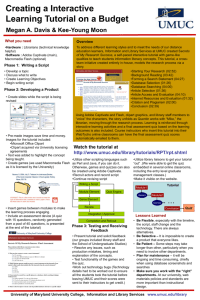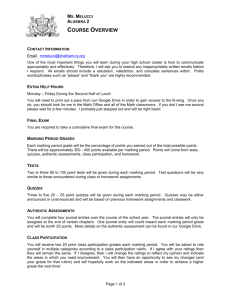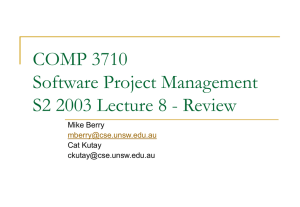Examples of Classroom Interaction Asking the students their hopes
advertisement
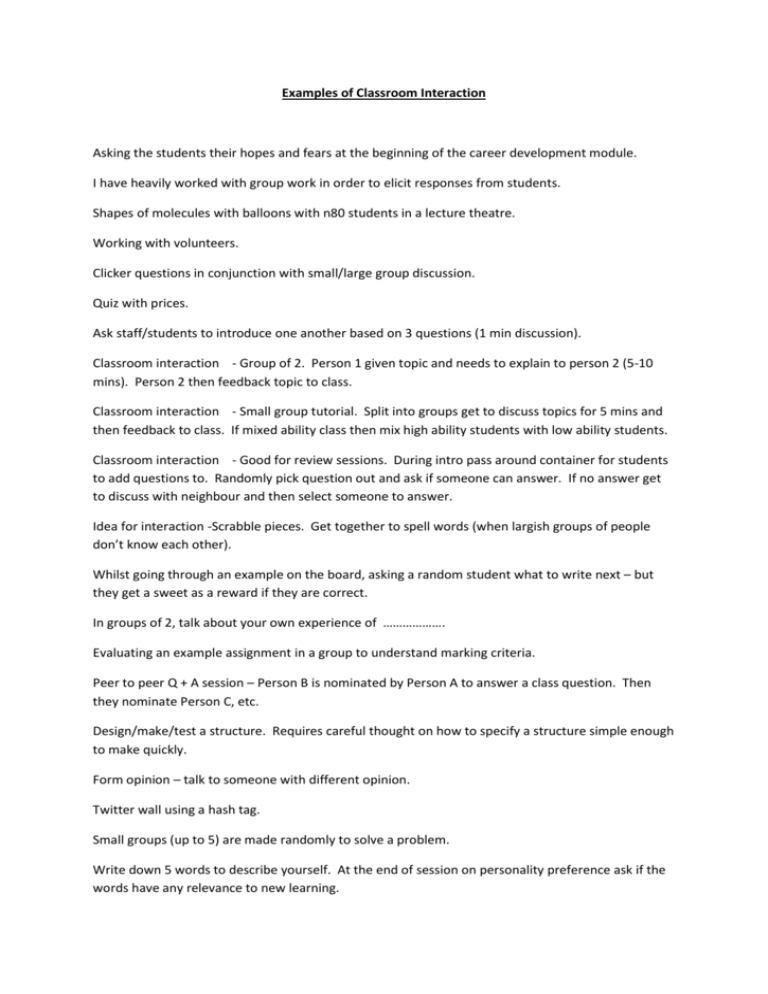
Examples of Classroom Interaction Asking the students their hopes and fears at the beginning of the career development module. I have heavily worked with group work in order to elicit responses from students. Shapes of molecules with balloons with n80 students in a lecture theatre. Working with volunteers. Clicker questions in conjunction with small/large group discussion. Quiz with prices. Ask staff/students to introduce one another based on 3 questions (1 min discussion). Classroom interaction - Group of 2. Person 1 given topic and needs to explain to person 2 (5-10 mins). Person 2 then feedback topic to class. Classroom interaction - Small group tutorial. Split into groups get to discuss topics for 5 mins and then feedback to class. If mixed ability class then mix high ability students with low ability students. Classroom interaction - Good for review sessions. During intro pass around container for students to add questions to. Randomly pick question out and ask if someone can answer. If no answer get to discuss with neighbour and then select someone to answer. Idea for interaction -Scrabble pieces. Get together to spell words (when largish groups of people don’t know each other). Whilst going through an example on the board, asking a random student what to write next – but they get a sweet as a reward if they are correct. In groups of 2, talk about your own experience of ………………. Evaluating an example assignment in a group to understand marking criteria. Peer to peer Q + A session – Person B is nominated by Person A to answer a class question. Then they nominate Person C, etc. Design/make/test a structure. Requires careful thought on how to specify a structure simple enough to make quickly. Form opinion – talk to someone with different opinion. Twitter wall using a hash tag. Small groups (up to 5) are made randomly to solve a problem. Write down 5 words to describe yourself. At the end of session on personality preference ask if the words have any relevance to new learning. Subject/expert groups – divide class into 4/5 groups to discuss one aspect of topic – 1 member of each group then travels to other group to present findings. At start of a session, taking a few minutes for participants to catch up and discuss a couple of course and professional experience related topics – before launching into the session. Ask students about extra curricular interests for getting to know tutorial group. Write the name of the person makes easier to talk to people during discussion. Contributing to a live Google Doc. Getting students to all identify a different organism and then tell new small group what it is and why. Splitting groups up into teams and collectively marking past work with leader and other students. Role play – Students act out a situation. Student Led Seminars – Group of students run seminar for rest of seminar group. Lecturer takes back seat and students interact with each other. Small group discussions – whole class discussions. Go to 4 corners of the room depending on an opinion/where you are from subject area etc. Example of classroom interaction: using props to illustrate point. Use of Ketso to support collective practice of brainstorming for action plan. Classroom interaction – Stage 1 – 10 question quiz to individuals. Stage 2 – 10 question quiz but in groups. Have to talk about the quiz but also see (if questions are ok) that groups achieve more than individuals. Physical competition. A teacher in an MA Class used an activity to introduce students to each other which was very effective and engaging. “Think – Pair-share”. Divide classroom interaction into these three phases: students get individual thinking time. They get a chance to discuss with partner and get confident about their idea. Confidence to speak up. Document content generated as part of the NU Learning and Teaching Conference 2013 Document collated by Katie Wray






